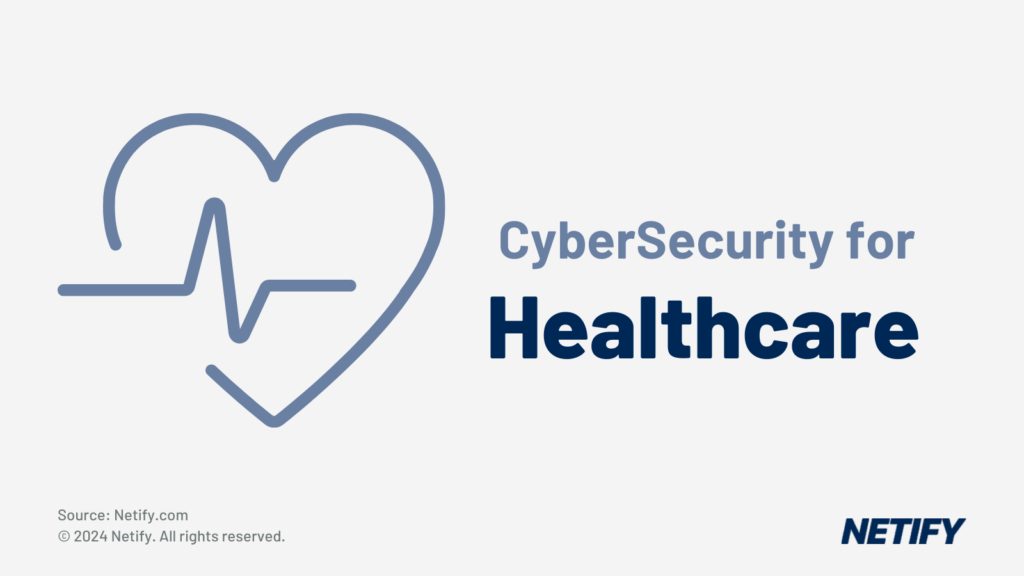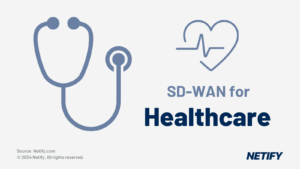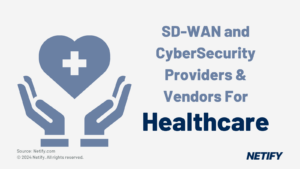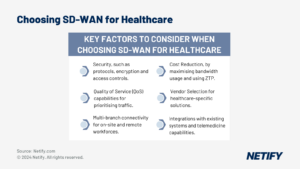Healthcare Providers should ask the following cybersecurity questions:
|

When developing the components of a SASE cybersecurity (Secure Access Service Edge) and SD WAN solution for the healthcare sector, you need to understand which areas to consider. Here are ten questions, broken into relevant areas, to help you make the right choices:
What assets should be protected?
Q1: Do you have full visibility of the assets across the expanded healthcare network?
Digital assets across the vast tech landscape of a healthcare organization can mean that visibility is an issue. There is a high probability that your organization has a vast array of endpoints, including smartphones and apps, as well as IoMT devices (Internet of Medical Things) which are typically connected across SD-WAN. Network visibility is a key enabler of robust cybersecurity protection. Without full visibility, any parts of the infrastructure that cannot be seen, also cannot be protected.
Q2: Do you know the risks inherent in your supply chain?
Lack of visibility also extends to the healthcare supply chain. Due diligence on suppliers is an essential ingredient in de-risking a healthcare organization but it is also an important part of understanding what cybersecurity measures to put into place. Regulations, including HIPAA, mandate that the wider supply chain is secured. Zero trust security and PAM (privileged access management) are key cybersecurity measures to put in place across the wider healthcare ecosystem.
Q3: Who needs privileged access to what assets?
Once you have established visibility across the healthcare ecosystem of people, devices, apps, and locations, you should be able to establish who needs what level of access privileges. This will establish a baseline for using an SD-WAN within a zero trust architecture.
Q4: What data protection regulations do you need to adhere to?
Healthcare is one of the most heavily regulated sectors. Create a map of the regulations that you must abide by or the standards that will help you to adhere to regulations. Use this map to help decide the type of cybersecurity functionality you need to achieve compliance.
Q5: Would a Third-Party Risk Management Program (TPRM) add value to your compliance mapping?
A TPRM is used to assess the levels of risk across your entire expanded network of devices, people, processes, and technologies. A TPRM is a specialist helping hand that can cross-reference compliance requirements with security assessments. Going through a TPRM process provides actionable insights into how to meet regulatory requirements with the right level of security.
Comparing SD WAN for the Healthcare sector
Q6: How easy is deployment and management of the cybersecurity solution?
Just as important as security functionality is the administration of the chosen cybersecurity solution. Ease of deployment and centralized management is vital in the types of highly complex networks seen in healthcare. SD-WAN is ideal for healthcare environments, but this distributed connectivity also means that security measures must be able to be centrally managed, deployed, updated, etc. A cloud-based model of cybersecurity solution deployment and management is a must have for the wide-ranging apps and devices of a modern healthcare organization.
Q7: Map critical apps and devices to the right level of protection
The protection of critical apps in the healthcare sector is vital for patients. SD-WAN is ideal for connecting across highly distributed apps and devices. SD-WAN can be used alongside ZTNA to create protected perimeters to mitigate against cyber-attacks and de-risk critical apps and devices. Carry out a risk assessment to identify critical applications and determine the most appropriate cybersecurity requirements.
Q8: What type of cybersecurity solutions do you need to meet regulations?
Linking back to Q4, use the information gathered during this exercise to decide what SD-WAN integrated cybersecurity solutions are needed to adhere to regulations that affect your healthcare organization.
Q9: Help in the deployment of the Secure SD-WAN
The cyber-skills gap is impacting all industries, and healthcare is no exception. A report from IONOS Cloud, says that 37% of healthcare IT decision-makers believe their organization is at risk of security threats because of a skills gap. Decide if you need help from an outside managed service specialist who understands the healthcare sector’s unique needs and the most appropriate use of cybersecurity solutions within that type of environment.
Q10: Can you continuously monitor the vastly expanded healthcare network of devices, people, and apps?
Healthcare is in a unique position of having a vast real-estate of healthcare applications and devices, and people using those apps and devices. Many of these devices and apps may fall under the radar and become ‘ShadowIT’; hybrid cloud environments often exacerbate the situation. This places patient data and PHI (protected health information) at risk. Can the Secure SD-WAN monitor potential security events and capture the data needed to spot a potential threat and respond to it quickly?


